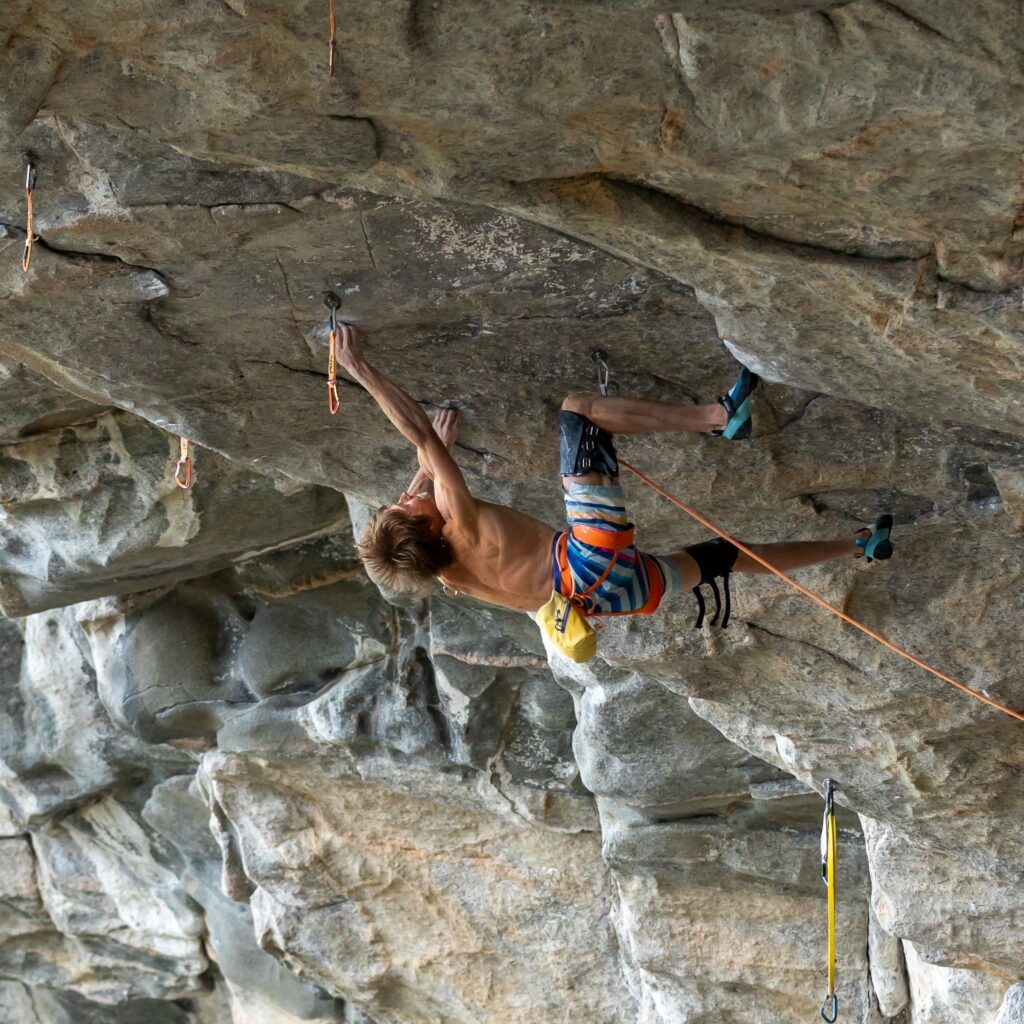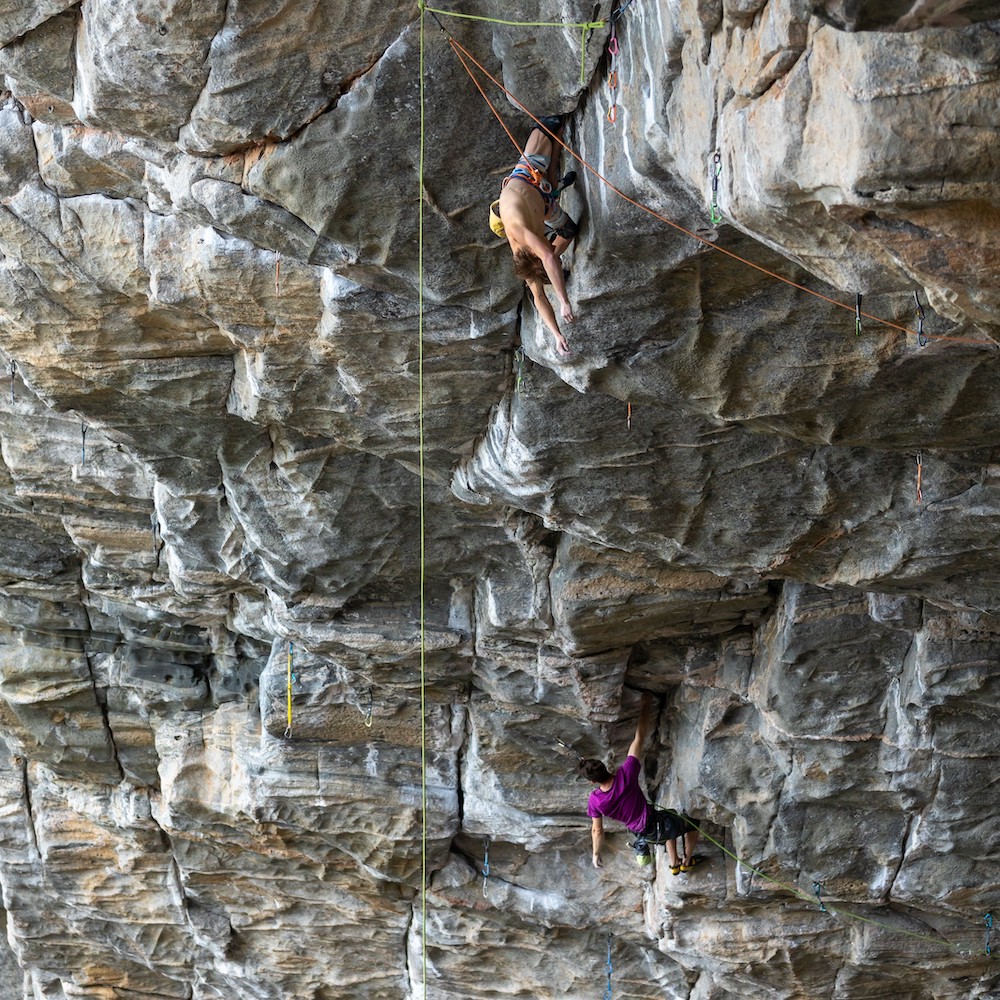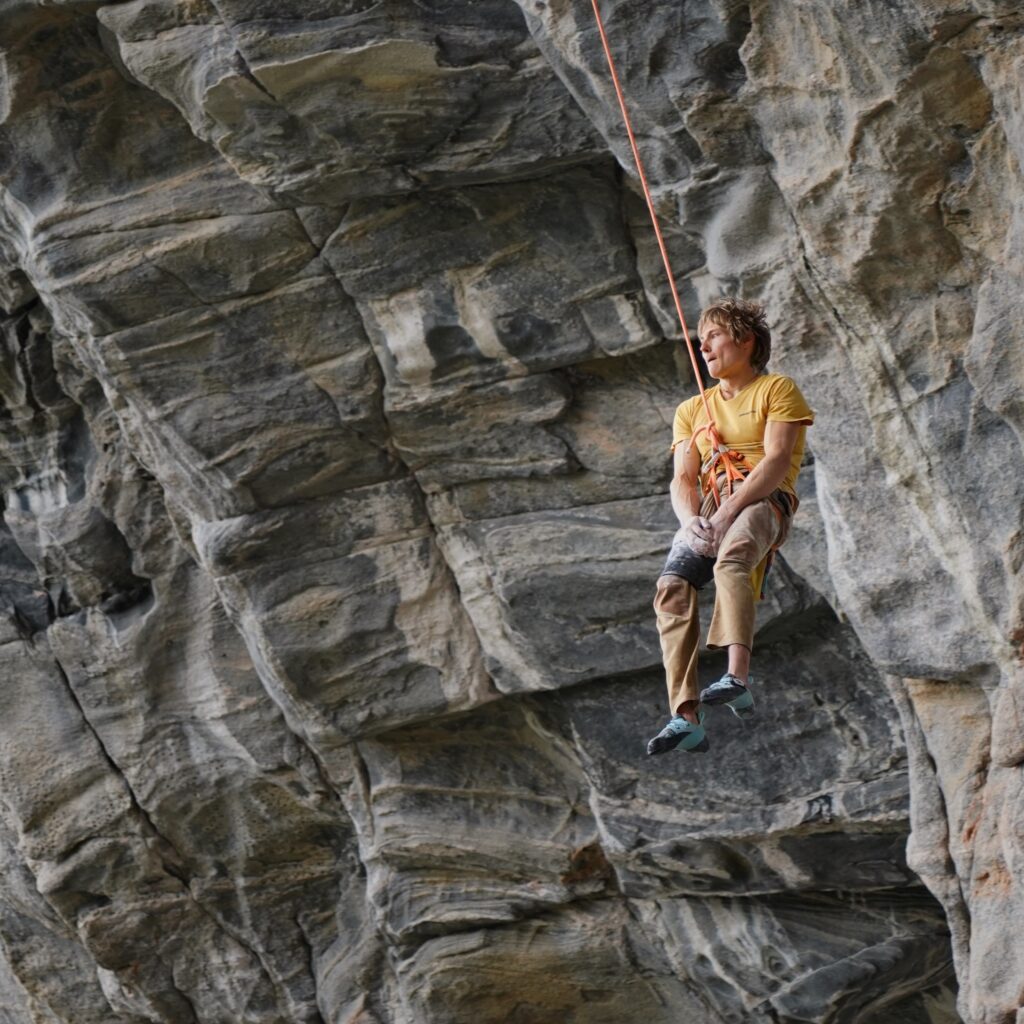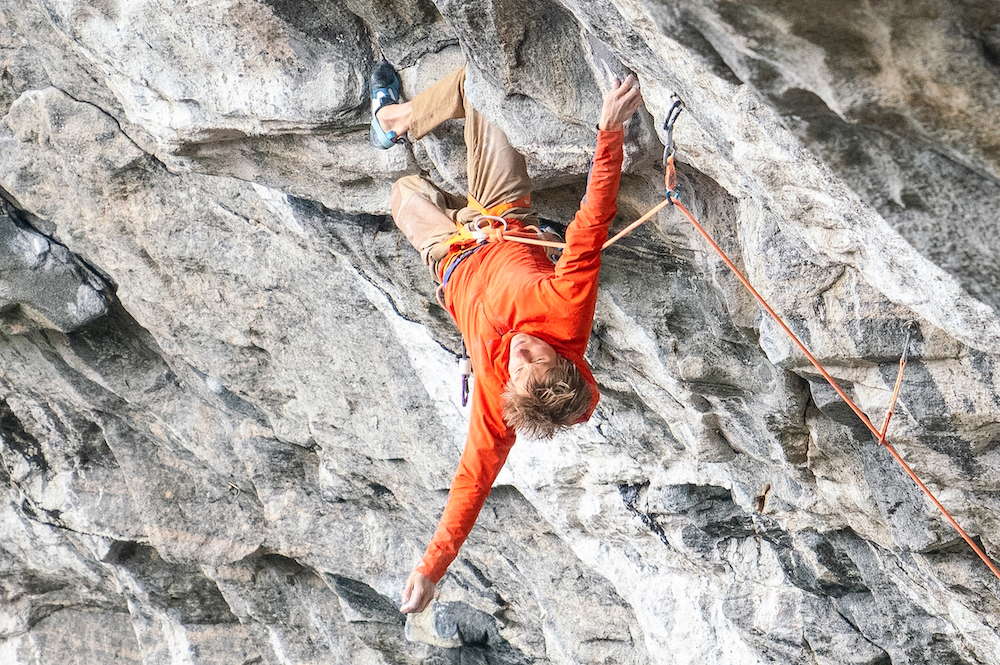From mid-August to early September, Alex Megos had a successful trip to Norway’s Hanshelleren in Flatanger, sending Change (9b/+) and Move (9b/+). His ascents came from his willingness to adapt and to start using kneebars. It was a significant difference from his first trip.
The Flatanger cave has changed since 2015 when Alex first visited the area. Nine years ago, only Jakob Schubert, Adam Ondra, Magnus Mitdbo and a few others were in the cave. Now, 50-100 people climb on the additional 5.11 to 5.13 routes and testpiece climbs that have been established around the caves. Word of better conditions attracted more climbers. During the summers, the cave keeps cool compared to the rest of Europe. The steepness of the cave also means that rain doesn’t affect the climbing. Camping’s just a short walk away. Nearby bouldering also allows for a change when the massive routes become too much. All these factors make the place ideal for hard summer climbing.

After the Paris Olympics, Alex was hungry for success. He hadn’t been able to try as hard as he wanted at the games and the Flatanger cave provided an opportunity to push himself. “I was psyched to try hard but I didn’t know how it would go,” Alex said.
This trip, Alex pushed his climbing, tackling the endurance routes, with a new approach. “I allowed myself to open up more to the kneebar game,” Alex said, “to work with them rather than against them.”
Alex’s traditional climbing style comes from his home crag in the Frankenjura, Germany, where the powerful limestone routes tend to be around twenty moves and take about five minutes to complete. Comparatively, the routes in the Flatanger take around 30 minutes to climb. The kneebars, which can make the climbing choppy, can also make them easier.

“It took me two weeks to learn how to put on the kneepads correctly,” he said of keeping the pads from sliding as he climbed. He learned the nuances of kneebarring, how to take the weight off his arms as he climbed, and how to trust the knees more. “I have a lot to learn,” Alex said of his kneebarring.
Alex still learned enough to complete Change, the world’s first 9b+. The route fit his style with a shoulder gaston boulder problem crux a mere twenty feet off the ground. After that, the route climbs a V11 boulder and more 5.14 to the top. The endurance nature of the route makes the end difficult. “You’re on the biggest jugs in the world and you’re almost about to fall off,” Alex said of the climbing to the anchors.
Conversely, Move starts with endurance climbing and the difficulty comes at the end. Climbing the first half as efficiently as possible to arrive at the top as fresh as possible. The long climbing meant that Alex only had the opportunity for one good try a day. With the crux at the end of the pitch, Alex felt all the pressure of the send so he engaged in unique Flatanger tactics.

In 2015, only one or two ropes hung from the cave but in the past few years, climbers added more. The hanging ropes allow climbers to jumar up and access different parts of the wall. Alex ascended up to the last four bolts of Move and worked the difficult last moves. This allowed him to gain confidence so that he was able to climb to the ending well and then execute. When he finally stuck the end sequence, he was able to ride the momentum and send The Illusionist (9a) as well.
Megos plans to work more on his kneebarring and returning to the cave, to climb even harder.
